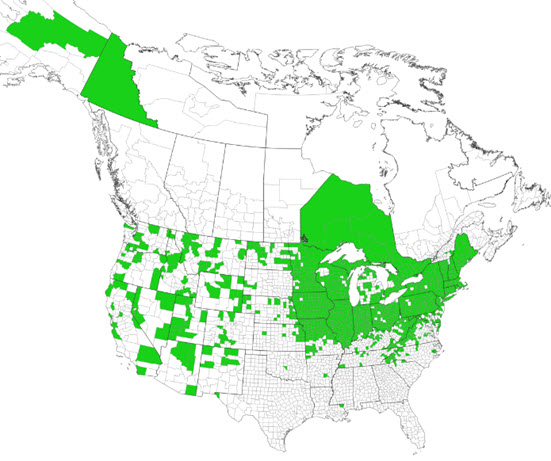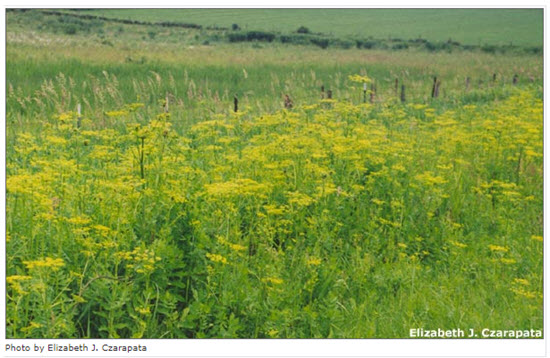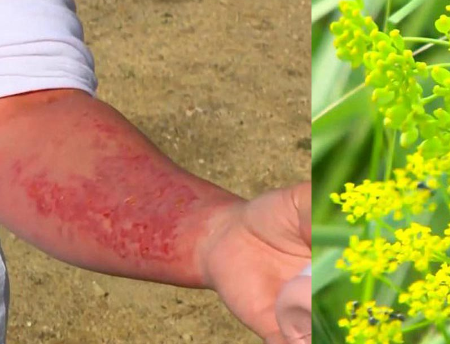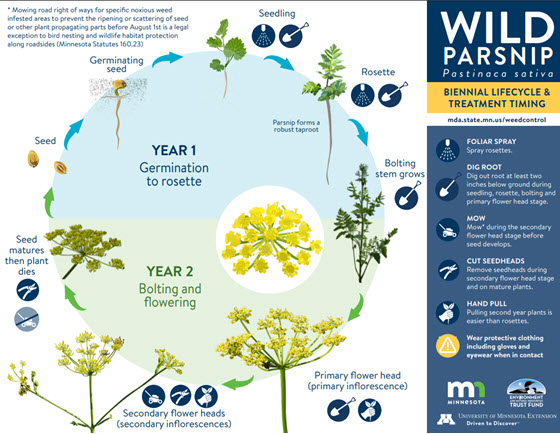Click below to listen to my 2 min. Garden Bite radio show/podcast: Wild parsnip 2022
From Minnesota to Pennsylvania, wild parsnip is on the obnoxious noxious weed list.

Wild parsnip is highly invasive and if ignored can spread rapidly, developing into large monocultures that replace native animal and plant habitat.

It reduces the quality of agricultural forage crops and can also impact livestock if eaten… and NOT in a good way. The plant sap contains toxic chemicals that are activated by sunlight and can cause serious burns and blisters to human skin after contact.

Wild parsnip is most commonly found along road and rail rights-of-way. It is also found invading a variety of disturbed landscapes including trails, natural areas, pastures, forest and field margins, waste areas, unmaintained gravel pits, and idle lands.
The plant can grow up to 5 feet tall and has hollow, grooved stems that are hairless. The plant’s leaves look like large celery leaves. They’re yellow-green, coarsely toothed and compound, with 3-5 leaflets. Small, yellow flowers are clustered together in a flat-topped array approximately 3-8 inches across.
Here is a link to a bigger photo of the one below.

It can tolerate dry, mesic, or wet soils, but not shaded areas. Some local folks in my area have gone out, all suited up, to spray the ditches. While most of the time I don’t recommend using chemicals, this is the time when they become necessary.
Several years of treatment will likely be necessary. And then there is restoring the area so that those plants can withstand a fight with wild parsnip.

While spring is a good time to control it, fall is too. Glyphosate is what to use. I know, I’m moaning too but this killer is the best defense against this incredibly noxious weed. If wild parsnip weren’t so harmful to humans and animals I would not recommend it.
